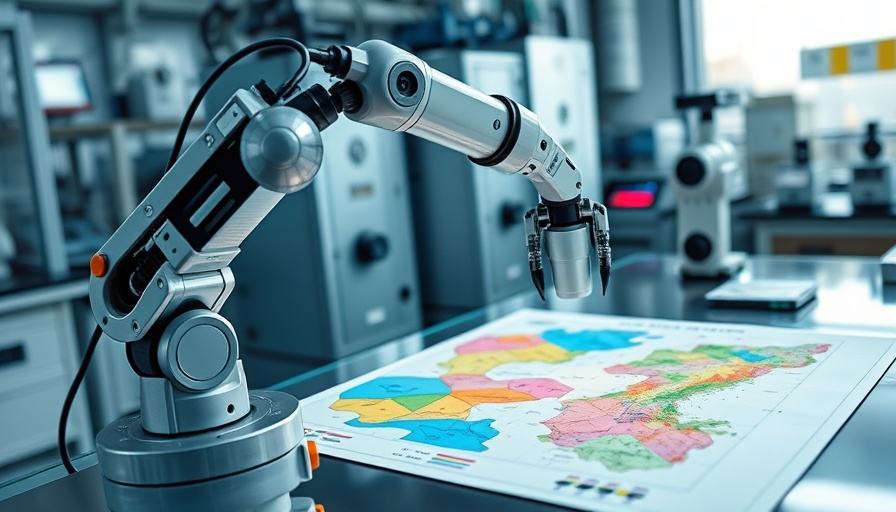
AI's First Steps on Alien Terrain
Imagine a future where robotic landers, designed to explore the rugged terrains of distant moons and planets, employ advanced AI technologies to make autonomous decisions in real time. Recently, researchers from the University of Illinois at Urbana-Champaign have demonstrated just that. In an innovative experiment hosted at NASA's Jet Propulsion Laboratory (JPL), they trained an AI model to autonomously assess diverse materials and scoop samples, showcasing its functionality in a controlled yet groundbreaking environment.
Transforming Moon and Mars Missions
The AI model's development stemmed from a pressing need in aerospace and planetary science: the ability to quickly gather samples in extraterrestrial environments. With limited battery life and strict mission timelines for landers on planetary surfaces, efficiency is not just important; it can determine the success of a mission. The robot’s scooping mechanism was tested with various materials, from coarse sand to solid rocks, and created an extensive database of 6,700 data points. This training allows the AI to adapt to new surfaces without any substantial preprocessing or manual input, making it invaluable for future explorations.
Real-time Learning: A Leap Forward
One of the remarkable aspects of this experiment was how the AI learned to operate in a new environment. Aerospace Ph.D. student Pranay Thangeda described using a network link to connect with JPL's testbed. The model was able to analyze images captured by its robotic arm in real time, immediately identifying non-scoopable materials and then successfully moving on to gather samples from areas that were more promising. This real-time analysis mimics how we expect future robotic landers to behave on unexplored celestial bodies.
The Broader Implications of Autonomous Robotics
While this research initially focused on the exploration of ocean worlds, its implications are far-reaching. The model's ability to adapt without prior exposure to different terrains could revolutionize not just space exploration, but also several industries on Earth such as mining, archeology, and environmental monitoring. Potential applications extend to any context where adaptive sampling is advantageous— be it a remote landscape or a disaster zone.
Looking Ahead: Autonomous Rovers on Mars
This breakthrough resonates deeply with NASA's ongoing endeavors to send rovers to Mars and beyond. As technologies improve, we can anticipate that future missions will not only involve autonomous rovers like the Perseverance but will also integrate AI models that can learn and make decisions on the fly. Thangeda's enthusiasm for this research sheds light on the potential these innovations hold for space exploration.
Through this demonstration, we are not just witnessing a technological achievement; we are peering into the future of how humans will interact with far-off worlds. The continued development of AI-assisted robotic landers represents a paradigm shift in our approach to celestial exploration, potentially leading to discoveries that could reshape our understanding of the universe.
 Add Row
Add Row  Add
Add 




Write A Comment